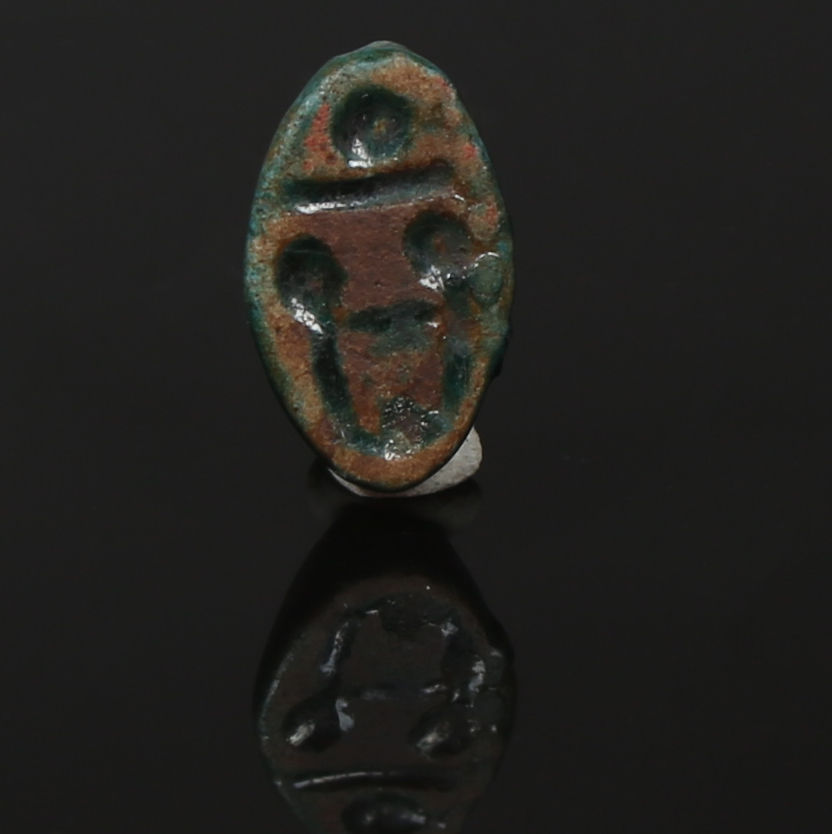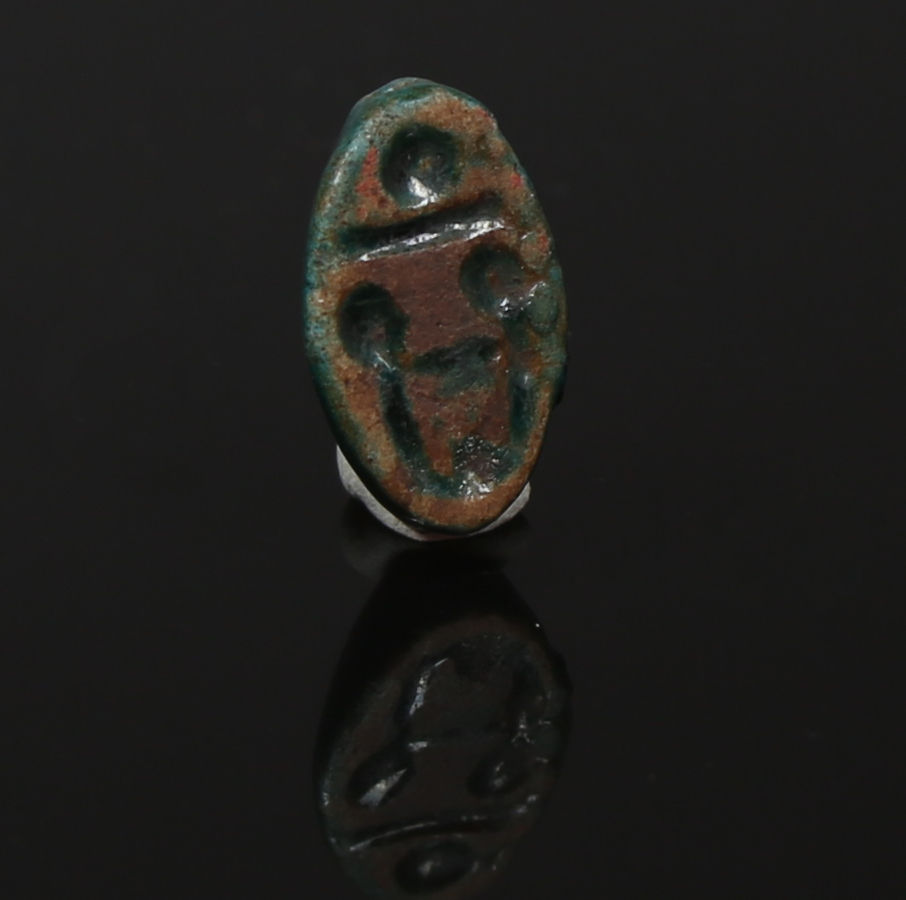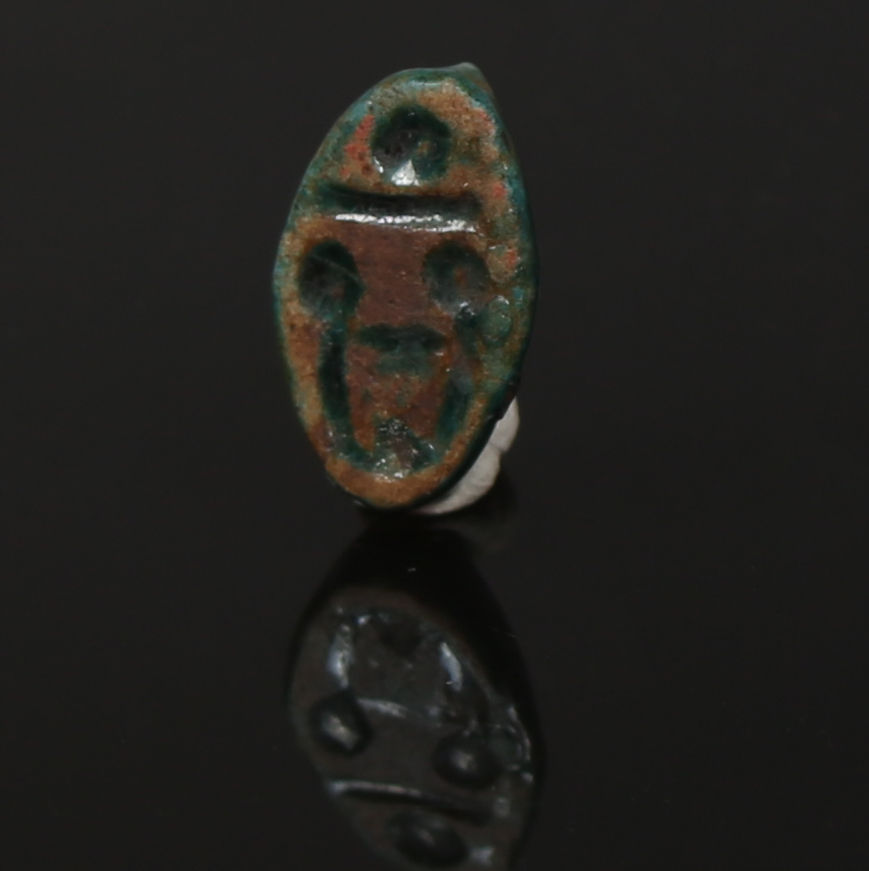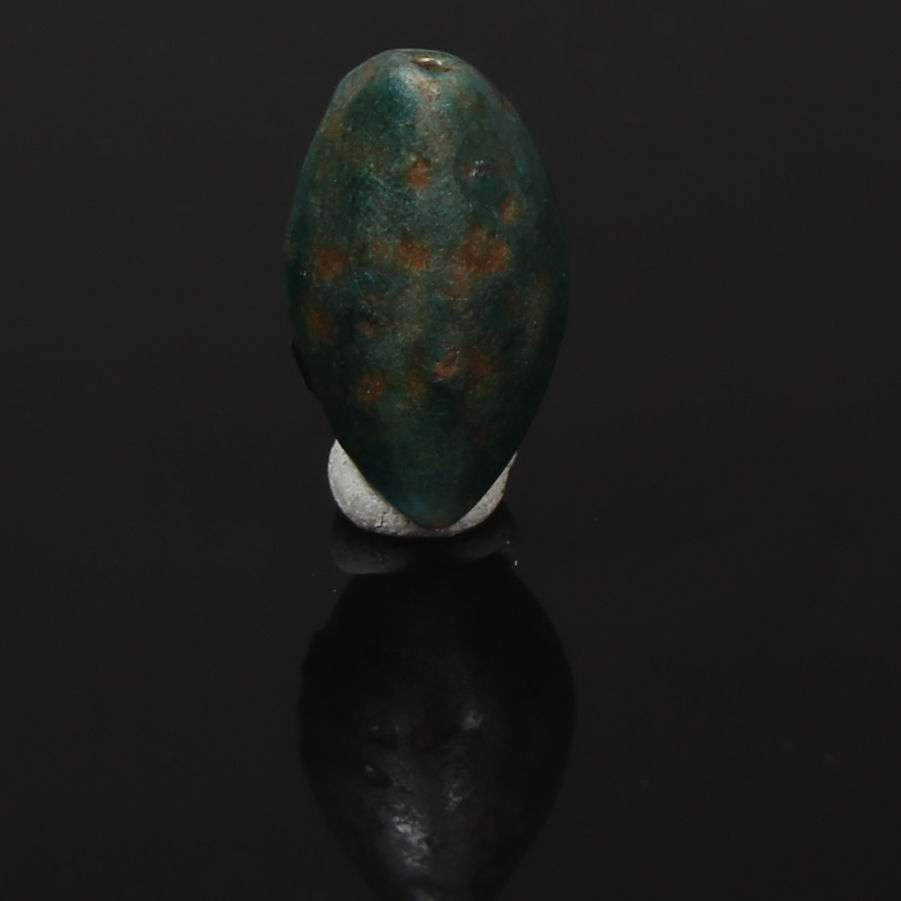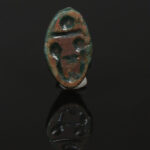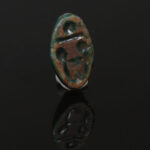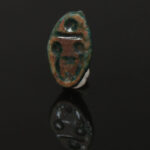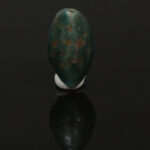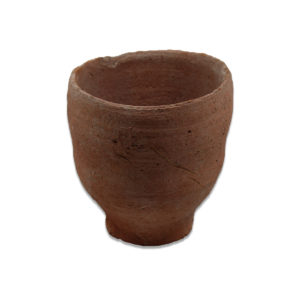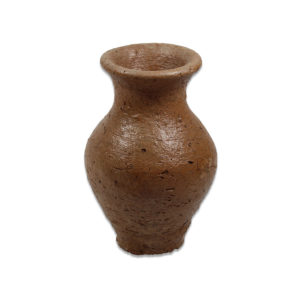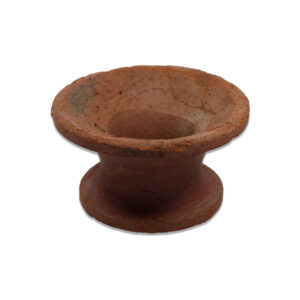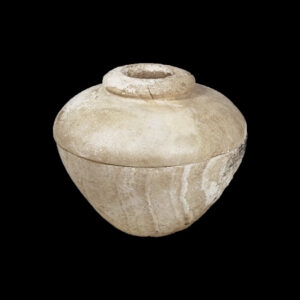Description
| ITEM | Cowroid for Nikaure |
| MATERIAL | Faience |
| CULTURE | Egyptian |
| PERIOD | Second Intermediate Period, 15th Dynasty, 1674 – 1535 B.C |
| DIMENSIONS | 14 mm x 7 mm |
| CONDITION | Good condition |
| PROVENANCE | Ex Museum Exhibiton of the Arbeitsgruppe für Biblische Archäologie, Germany (Deaccession) |
The term “cowroid” refers to a specific type of amulet or charm that was commonly produced during the Hyksos period in ancient Egypt. These cowroid amulets were typically made from faience, a type of glazed ceramic material composed of silica, quartz, and alkaline salts. Cowroid amulets were shaped like the seed of the colocynth fruit, which resembles a stylized heart with a flat base and a slightly pointed tip. They were believed to possess protective and magical properties, serving as talismans against evil forces and providing the wearer with divine favor and protection.
During the Hyksos period, which lasted from approximately 1650 to 1550 BCE, Egypt was ruled by foreign invaders known as the Hyksos, who originated from the Levant. The Hyksos introduced new cultural influences and artistic styles to Egypt, including the production of cowroid amulets made from faience. These amulets were popular among both the Hyksos rulers and the native Egyptian population, reflecting a syncretism of religious beliefs and cultural practices during this period of political and social upheaval.
Cowroid amulets were often inscribed with hieroglyphic symbols or magical spells invoking the protection of Egyptian deities such as Hathor, the goddess of love, beauty, and fertility, who was often depicted with cow-like features. The amulets were worn as jewelry or carried as talismans by individuals seeking divine protection, prosperity, and fertility.


